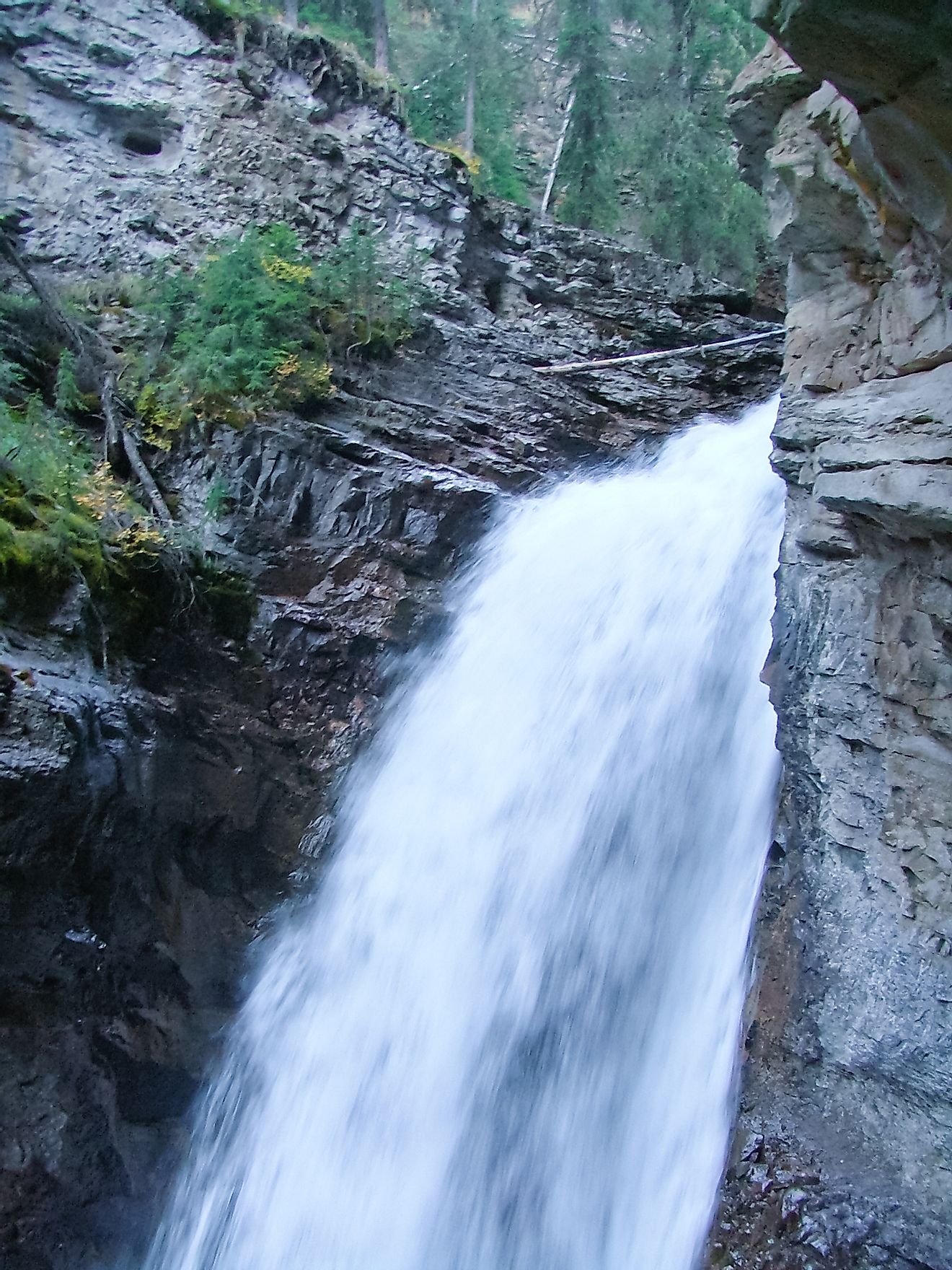Johnston Canyon, Canada - Unique Places around the World

5. Description
The spectacular site of the Johnston Canyon awaits exploration by visitors to the wilderness destination that is Banff National Park in Alberta, Canada. The Johnston Canyon displays a perfect blend of turbulence and tranquility, enthralling visitors with its unsurpassable, ethereal charm and its naturalistic demeanor. The canyon is the result of thousands of years of erosion of limestone rocks, shaped by the forces of the waters of Johnston Creek which flows through the canyon. The creek starts its journey in a glacial valley that lies at the north of Castle Mountain, at an altitude of almost 2,800 meters (more than 9,000 feet above sea level). It continues to flow south through the Johnston Canyon, before finally draining into the Bow River between Banff and Lake Louise at an elevation of 1,440 meters (4,724 feet).
4. Tourism
Johnston Canyon offers one of the best hiking opportunities in the area to tourists visiting the nearby towns of Banff or Lake Louise. The hike through this picturesque canyon is suitable for individuals of all ages and all energy levels. The Johnston Canyon can be approached from either Lake Louise or the nearby town Banff, separated by about a half of an hour’s drive from each of these two popular tourist spots. This nature destination draws tourists throughout the year, offering distinct charms in every season. Most tourists visit the Johnston Canyon during the summer months, when weather conditions are considered most pleasant, characterized by the plentiful sunshine and greenery that allow it to serve as an ideal time and place for a long-distance hiking trek. Winter is the favorite time for those seeking a different brand of adventure and tranquility. During this time, the entire canyon is coated with a white blanket of snow, and hikes are arranged to watch the enrapturing sight of the frozen waterfalls and naturally carved ice art. The footfall to the Johnston Canyon decreases during the spring and fall seasons, as melting snow and ice make its pathways muddy and slippery.
3. Uniqueness
The striking natural beauty of the Johnston Canyon, complete with jagged, limestone cliffs, gurgling waterfalls nestled amidst the rocky canyon, and the emerald green Ink Pots, is its most distinctive character. Catwalks constructed along the hiking trail allow tourists to easily hike through the otherwise difficult terrain of the canyon. The trail to the lower parts of the canyon passes through forested land, and is at a lower elevation. The nature of the trail changes into walkways through the steep limestone rocks alongside the Johnston Creek, complete with a view of the turbulent waters below. Two viewing points along the trail offer tourists a breathtaking view of the rumbling waters amidst the massive limestone rocks, with shades of greenery here and there. The 'Ink Pots' of Johnston Canyon, which are small pools with mineral springs bubbling to the surface, also offer an entrancing experience to the tourists visiting the Banff National Park area.
2. Habitat
The wide range of habitats offered by the varying elevation, foliage, and climatic conditions found in and around the Johnston Canyon region account for the incredible diversity of wild species to be found therein. Some of the many interesting mammalian species that can be spotted here include coyotes, deer, elk, cougars, foxes, moose, and black bears. Large, predatory grizzly bears can also occasionally be found wandering near the canyon. Birds nestle at various heights in the canyon, and some of the area's most elusive species, including the Dipper, or Water Ouzel, may be seen by those with a good eye and a little bit of luck. Water Ouzels are unique birds, known for their swimming abilities. The Johnston Canyon is also one of the two spots in Alberta where Black Swifts can be located. These birds are a pleasure to watch as they swim, dip, and dive upon the waters of the canyon for foraging purposes.
1. Threats
The presence of a number of shaded spots throughout the Johnston Canyon trail creates a cool environment, even during the summer season. Hence, it is always advisable to wear layered clothing to avoid the cold. Water and snacks should be carried during the journey, since the one- to two-hour-long hike along the trail through the canyon might necessitate the need for food and water to sustain one's energy and hydration. With oxygen levels being slightly lower at the higher altitudes of the canyon, one must take the necessary precautions to avoid breathing difficulties. Public transportation to the Johnston Creek is absent, and hence it is important to make proper conveyance arrangements before venturing out to enjoy its wild wonders.







